This is the Part II of the stroll through Matsuzaki, which offers a relaxed atmosphere with its namako walls and traditional style buildings. After being amazed by the works of Chohachi Irie at the museum, we resumed our stroll. From here, we’ll be able to see not only the chic black-and-white marbled walls of the town, but a different side of Matsuzaki, including hot springs, gourmet food, and the sea. (Click here for Part I).
Inashimo Shrine, surrounded by the prodigality and strength of nature
The vermilion-colored torii gate stands out noticeably in the town of Matsuzaki. Behind it is the lush greenery of Mt. Ushibara, which is said to be the mountain where the gods dwell. Located here is the Inashimo Shrine, a historic shrine where the gods of the mountains and the sea are worshiped.
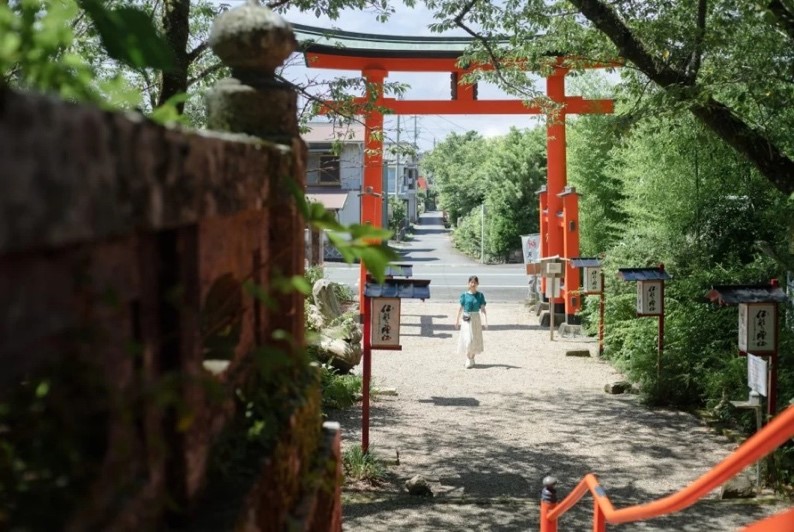
We unexpectedly discovered a ginkgo pattern on the cobblestone pavement at our feet. When you look up, the ginkgo tree with its majestic spreading branches dominates your view. This giant ginkgo tree, which has been designated as a natural monument by the prefecture, is approximately 1,000 years old. We rang the bell tied to the trunk of the tree three times, and received a share of its life force.
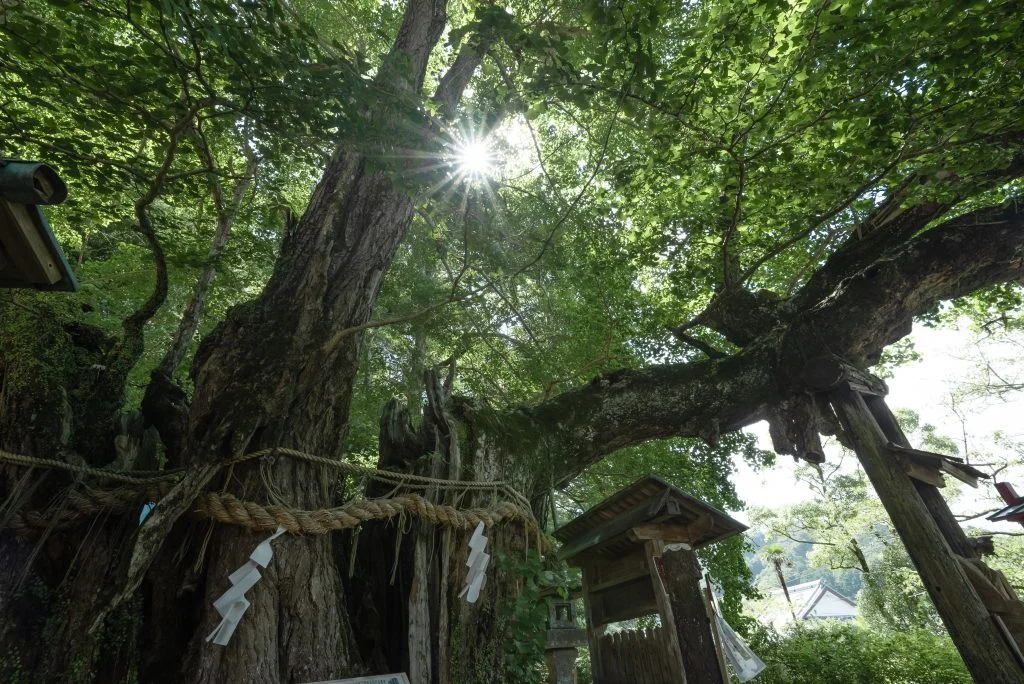
Inside the temple grounds, there are many attractions, such as the Oashi Daimyojin, a god that is said to bring good fortune for the health of your hands, feet, and back, and Shinmeisui, which is also called the spring of health and longevity, and which many people come from far away to draw from.
We were approached by a Shinto priest who graciously took us on a tour of the Houmotsuden (treasure hall), which is open to visitors free of charge. There, you will find a vast array of materials and valuable items that are comparable to those found in a museum.
Particularly noteworthy is the “Matsufuji Sokakukyo” (mirror with a pine tree, wisteria flowers, and two cranes), which can be viewed on the first day of every month and is said to have been donated by Minamoto no Yoritomo. The priest’s explanation of the deep meanings of the holes in the ground was especially fascinating to listen to.
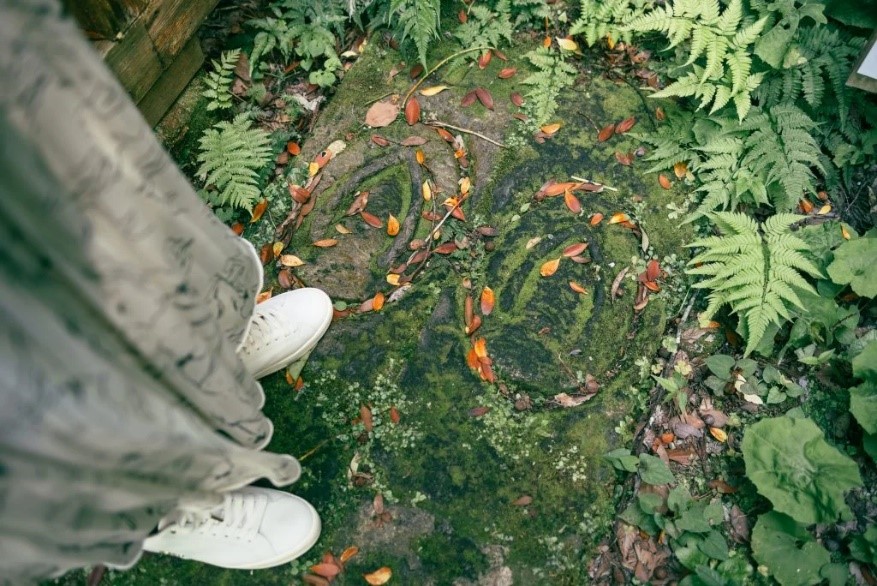
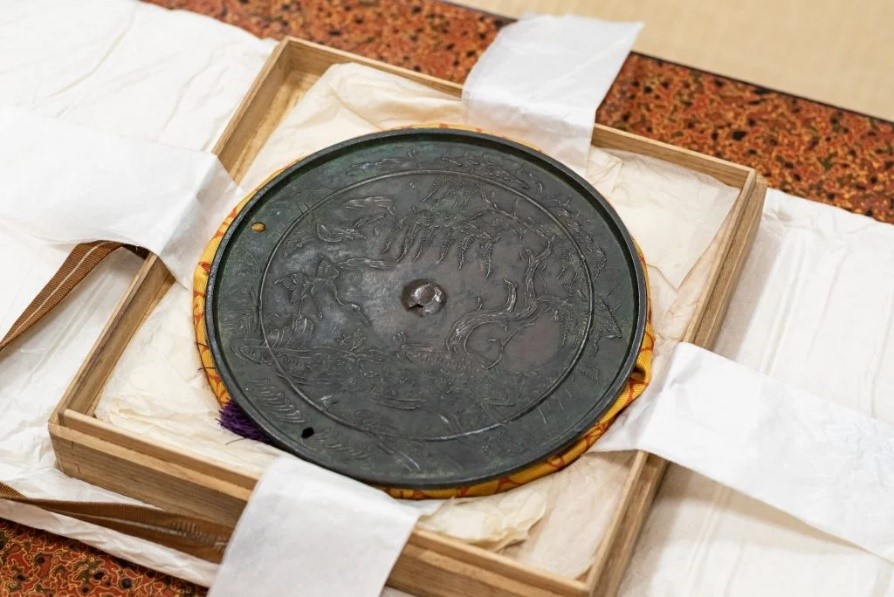
The Houmotsuden (treasure hall) is directly connected to the hall of worship, and we were told that we could worship inside, so we proceeded to enter.
As we entered the hall of worship and stood in front of it, we couldn’t help but let out a gasp of admiration. Unlike the main shrine buildings that we are accustomed to seeing, the main shrine here was built to soar above a stone wall assembled from Izu stones. The dignified appearance of the building naturally makes your body tighten up.
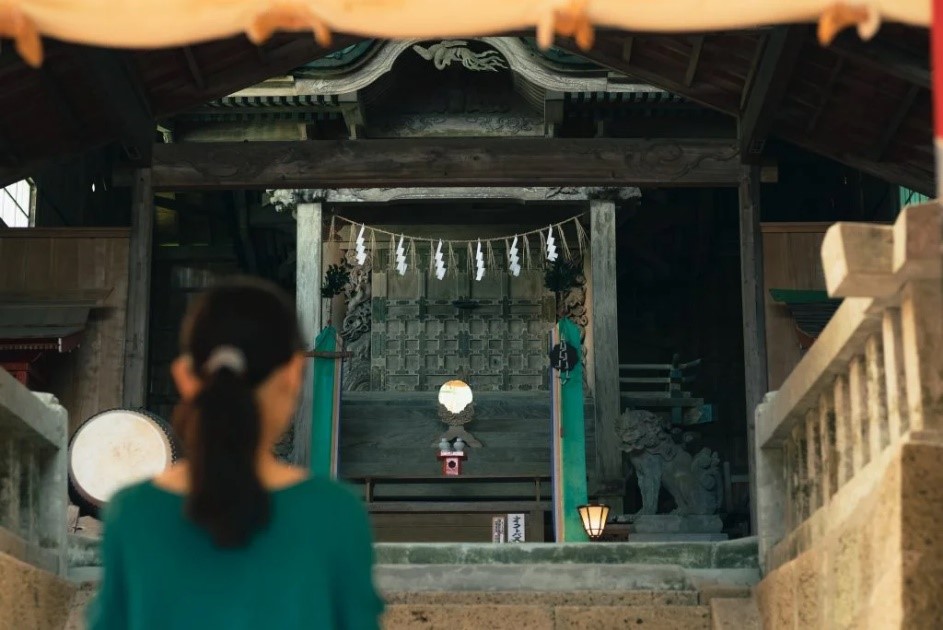
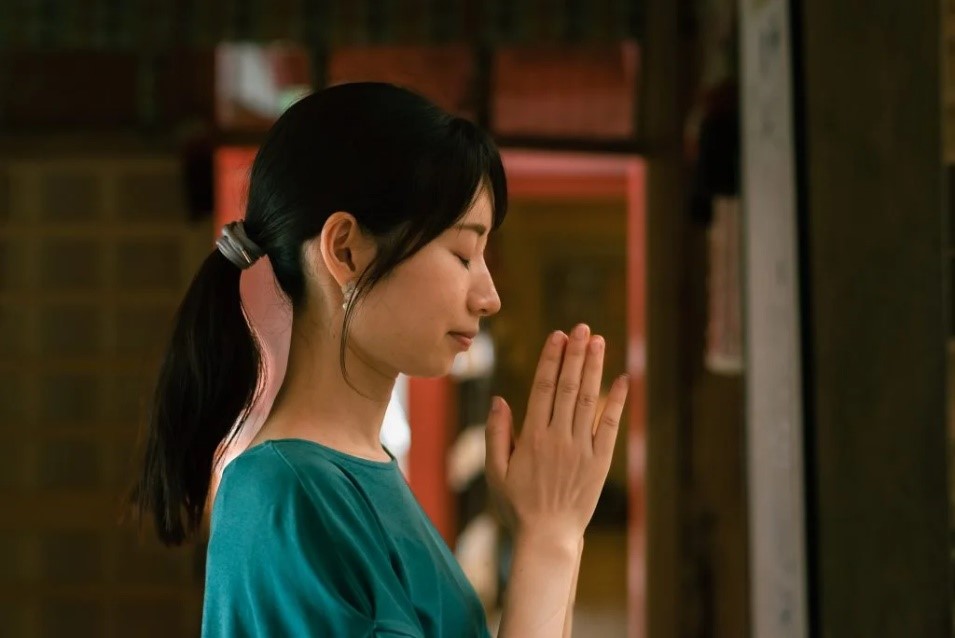
Visitors worship by reflecting their own image in the mirror in front of you. Pay your respects peacefully, being honest with yourself and feeling gratitude for the blessings of being able to live on the blessings provided by the sea and the mountains.
[Inashimo Shrine] http://www.inasimo-jinja.jp/
Soothe your tired feet in a footbath with free-flowing hot spring water
Our minds were refreshed, but we were a little tired from all the walking so we decided to head to a hot spring. However, we were still in the middle of our stroll, so we stopped at a footbath that is available for anyone to use.
Next to the Izu Buntei, which was originally built in 1910 as a shop specializing in kimono fabrics and now serves as a free rest area, there is a footbath that is open to all visitors free of charge. The temperature of the spring water is as high as 62.2°C, so we enjoyed it while adjusting the temperature with water from the tap nearby.
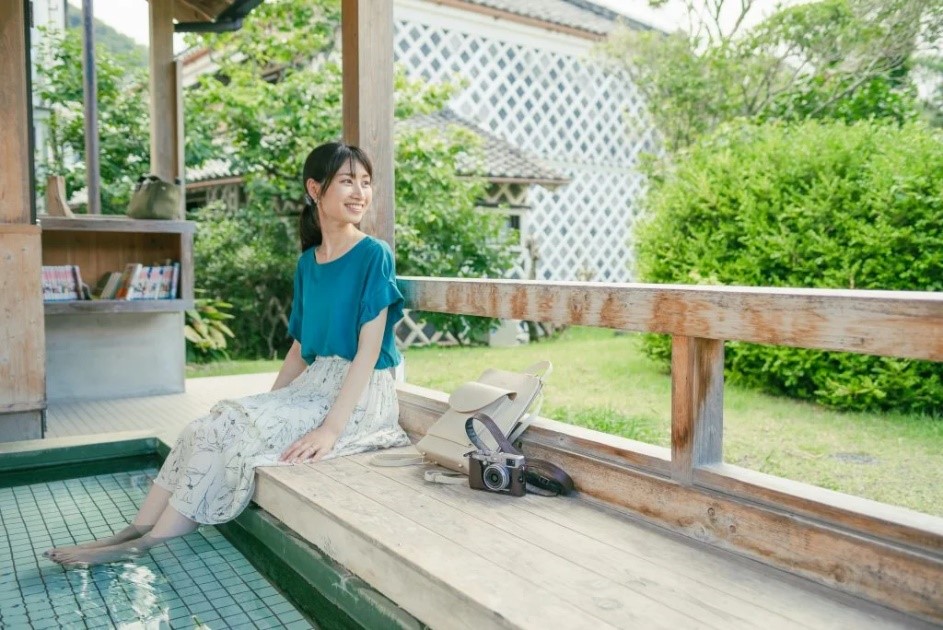
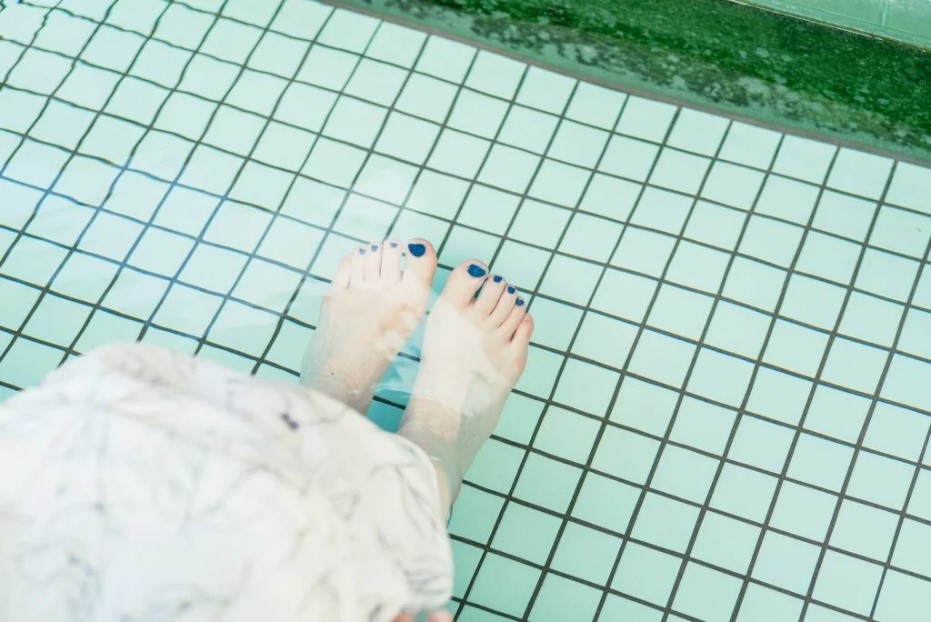
[Footbath of Izu Buntei] https://www.town.matsuzaki.shizuoka.jp/docs/2016020300691/
(Izu Buntei)
Enjoy the sakura leaves, a local specialty of Matsuzaki, with some sakura mochi
Now that our feet are relaxed and we feel refreshed, we are hungry, so we decided to continue our stroll in search of Matsuzaki’s delicacies. We headed to Eirakudou, a confectionary shop established in 1873 near the Nakase Residence.

Because Matsuzaki is Japan’s largest shipper of sakura leaves, the signature product here is the “Chohachi sakura-mochi” (cherry blossom rice cakes). A slightly unique style consisting of a soft and fluffy rice cake wrapped with sweet bean paste and sandwiched between two fragrant sakura leaves. The saltiness and texture of those two sakura leaves, however, balance out the flavor of the sakura-mochi. The baked confectionery “Eiraku,” which we purchased on impulse, paired very well with the crushed red bean paste and cream cheese, and we couldn’t stop ourselves from taking another bite.


[Eirakudou] https://izumatsuzakinet.com/eirakudou/
Crispy croquettes with precious “kawanori” (river seaweed)
We passed by this store, lured by the delicious smell coming from inside. From the window, we could see an assortment of colorful tableware, and we were curious so we decided to enter.
The tableware seen from the outside was all from Giovanni DeSimone. Apparently, he was an artist who studied at the same art school as Picasso and is very popular in Sicily. The tableware was cute, but it was the appetizing smells that caught our attention. And it was no wonder, as this was a butcher store that had been in business for three generations. It seemed to be the perfect time to enjoy some fried food, so we ordered the “kawanori croquette,” which the store staff highly recommended.



Kawanori is a type of seaweed found in estuaries where fresh water and seawater mix, and in Japan it can only be found in the Shimanto River in Kochi and the Nakagawa River in Matsuzaki. The batter and filling are mixed with plenty of kawanori, and even before you eat it, you can smell the aroma of the sea. Because it is freshly deep-fried, the batter is crispy and the inside is soft and flaky. It is the perfect snack when you are feeling a little hungry.
[Asai Meat] https://www.asai-meat.com/
We discovered happy sweet bread at the bakery right in front of the harbor
After walking a little further toward the ocean, you will find a cute little bakery with a lovely storefront. The bakery offers about 30 types of bread, including bread made with local ingredients, and is well-known among locals.

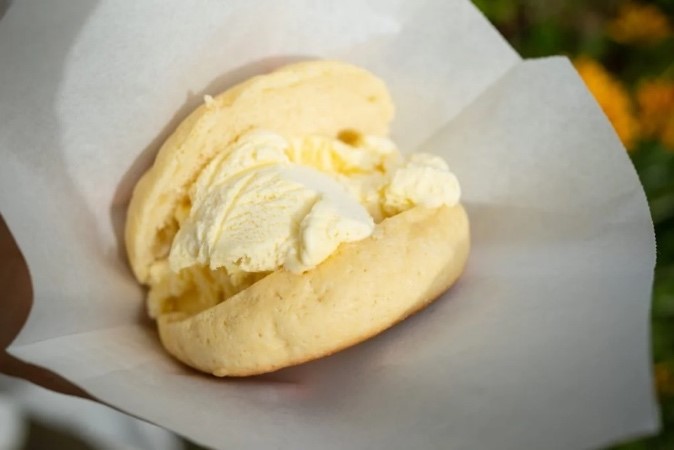

After ordering the “ice cream melon bread,” which caught our attention from a banner at the storefront, an ice cream sandwich appeared on a melon bread so large that it had to be held firmly with both hands. There is no greater feeling of happiness than hurriedly chomping down on a warm melon bread with soft ice cream starting to melt inside of it. Apparently once the melon bread is all out for the day, so too is the ice cream melon bread. Although we were full, we were also curious about the hijiki bread, which is made with hijiki produced in Matsuzaki and Kumomi, so we decided to take some home.
[Costa Forno] https://b-izu.com/spot/post-12648/
The tranquil port town and refreshing ocean views are also Matsuzaki’s charms
The sound of the ocean waves and the sea breeze will always draw you in no matter what you are doing. Matsuzaki Port is located just outside the bakery, so we decided to head there without any hesitation. Inshore fishery is the main industry here, and although the boats are not very big, time passes by leisurely with the boats floating around.

As we continued on, we discovered a long stretch of sandy shoreline. With a shallow sea of about 500 meters in length, this beach becomes crowded with visitors during the summer months. Walking around town is fun, but nothing beats the ocean!


As we sit on the chairs that are available for anyone to use and gaze out at the ocean, the time seems to pass by before we know it. Once we’ve settled down a bit, we started to feel a bit hungry again, so we decided to enjoy the hijiki bread that we bought earlier that we were supposed to bring home with us.
A passing local resident turned to us and asked us which inn we were staying at today, and whether we had eaten much seafood, and we realized that there were still many attractions of Matsuzaki that we had not yet encountered, so we knew we had to plan another trip to Matsuzaki.
Enjoy Matsuzaki’s hot springs at Osawa Onsen
If you want to enjoy Matsuzaki to the fullest before returning home, we highly recommend taking the journey to Osawa Onsen. The hot spring opened about 250 years ago and was called the “Kesho no Yu” for the quality of its spring water. Formerly known as the Osawa Onsen Hotel, it opened as a town-operated day spa in December 2021, retaining its original atmosphere. The spacious and open design allows you to fully enjoy relaxing your entire body in the hot spring water that flows directly from the source.


[Osawa Onsen Yodanosho] https://www.izu-matsuzaki.com/
Summary

We spent a day leisurely walking around Matsuzaki and were able to experience firsthand how the people of Matsuzaki still cherish the namako walls as a source of pride for their town. Matsuzaki is a quaint little port town where people coexist with the sea and love nature, and the streets and buildings are too good to just pass by them! When you come to Matsuzaki, we recommend that you just walk around at your own pace and don’t worry about the time.
👇Click here for Part I
